Today, we have a full programm: Around noon we visit Junji and Yusuke Kadota in Miyazaki, and in the afternoon Haruyo and Shigeru Morimoto, whose tea garden is only a few kilometres away from the Kadotas’. Both family have known each other for generations, and exchange their knowledge and experience about organic tea farming. The historical Kama of the Kadota family is a witness to the long friendsthip between the Morimoto family and the Kadota family, as it is originally from the Morimotos’ production site.
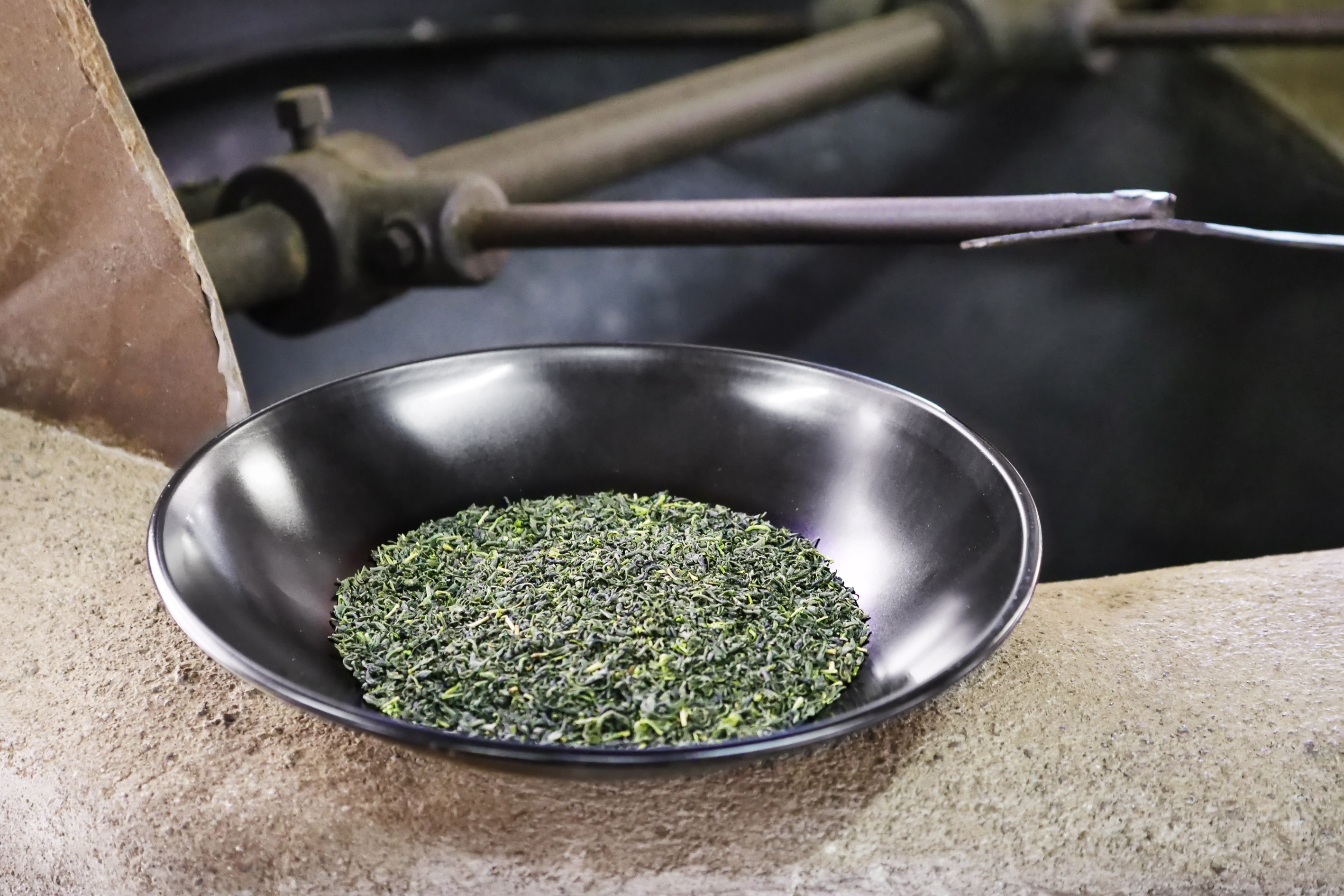
Originally, we had planned to spend the whole day with Morimotos today. But when we called yesterday to talk about the exact time of arrival, Haruyo Morimoto asked as to come in the afternoon. Today, they have especially little time to spare. It is in the middle of harvest season, and from the day after tomorrow the weather forecast says it will rain for three days. Nevertheless, we want to use our time well after the long journey to Miyazaki, so we ask Yusuke Kadota if we can visit them before noon. Luckily, for Junji and Yusuke Kadota this schedule fits well because today before the afternoon they still have time. For the evening, they are planning to harvest.
Yusuke Kadota picks us up from the station and drives us straight up to their highest tea garden parcel, the Arasaki field. Arasaki is 300m above sea level. On the way there, we pass a very narrow, small tea garden, which is almost invisible behind high trees and bushes. We ask Yusuke Kadota to stop shortly, to take a look at this idyllic tea garden. Yusuke’s grandfather planted the tea bushes here around 50 or 60 years ago. Before that, there were Mikan orange trees, just like in Arasaki.
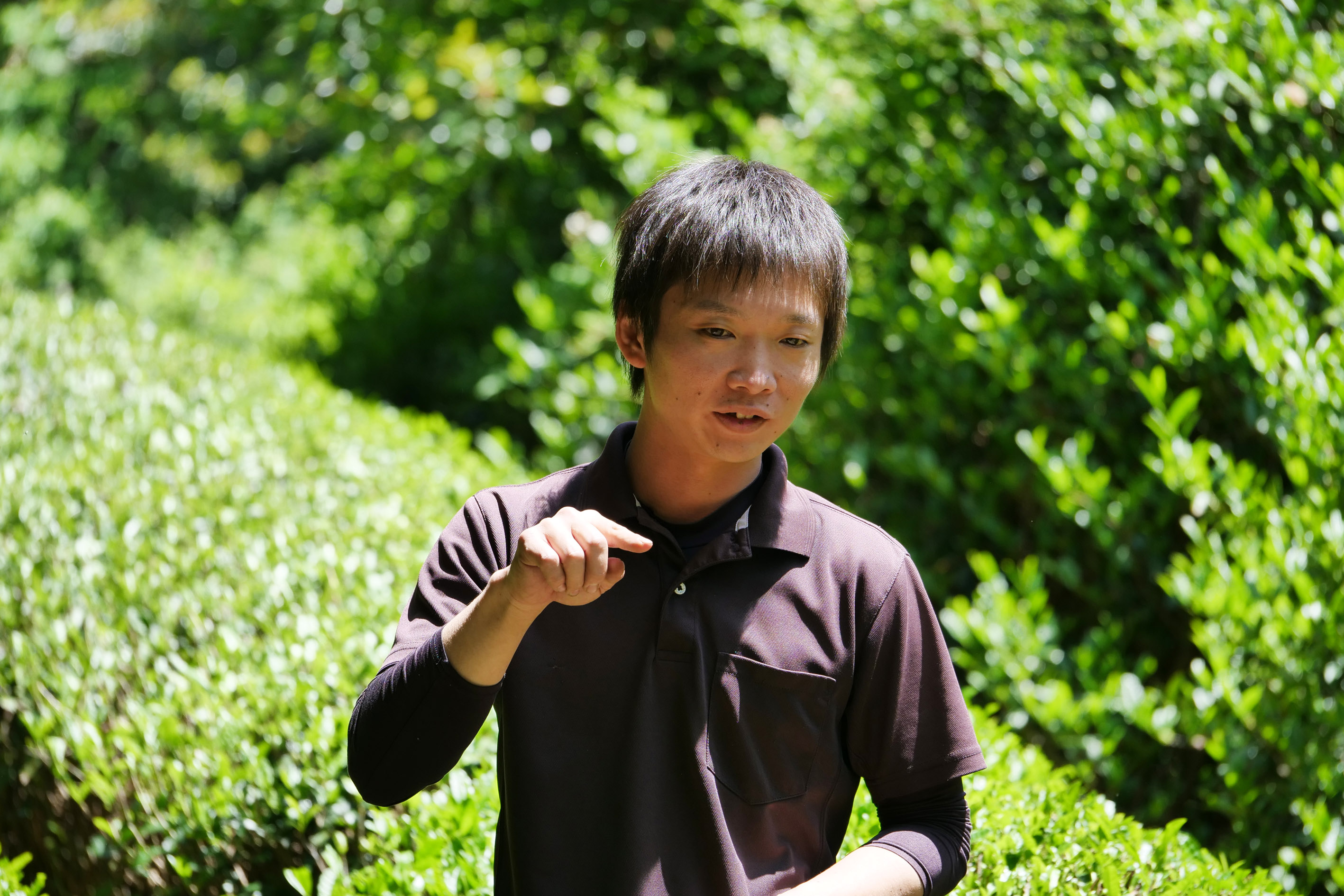
On April 25, they already harvested the young leaves of the tea bushes in this small garden. However, the amount is really tiny. It is just enough to supply family and neighbours with a little bit of Shincha. The harvest of this very small parcel is not for sale, but – besides its use for friends and relatives – rather a first indicator of what to expect from the first harvest of this year. Every year, the two of them have to adapt the details of their processing to the tea leaves by intuition.
Depending on thickness, elasticity and moisture of the leaves, the processing is modified to make a good tea in the end. If they would always process the leaves in the same way, without considering the natural conditions of each year and each time of harvest , in some years this would result in a good tea – and in some years not. Therefore, it makes sense to use a small amount to test how each year’s tea leaves should be processed ideally.
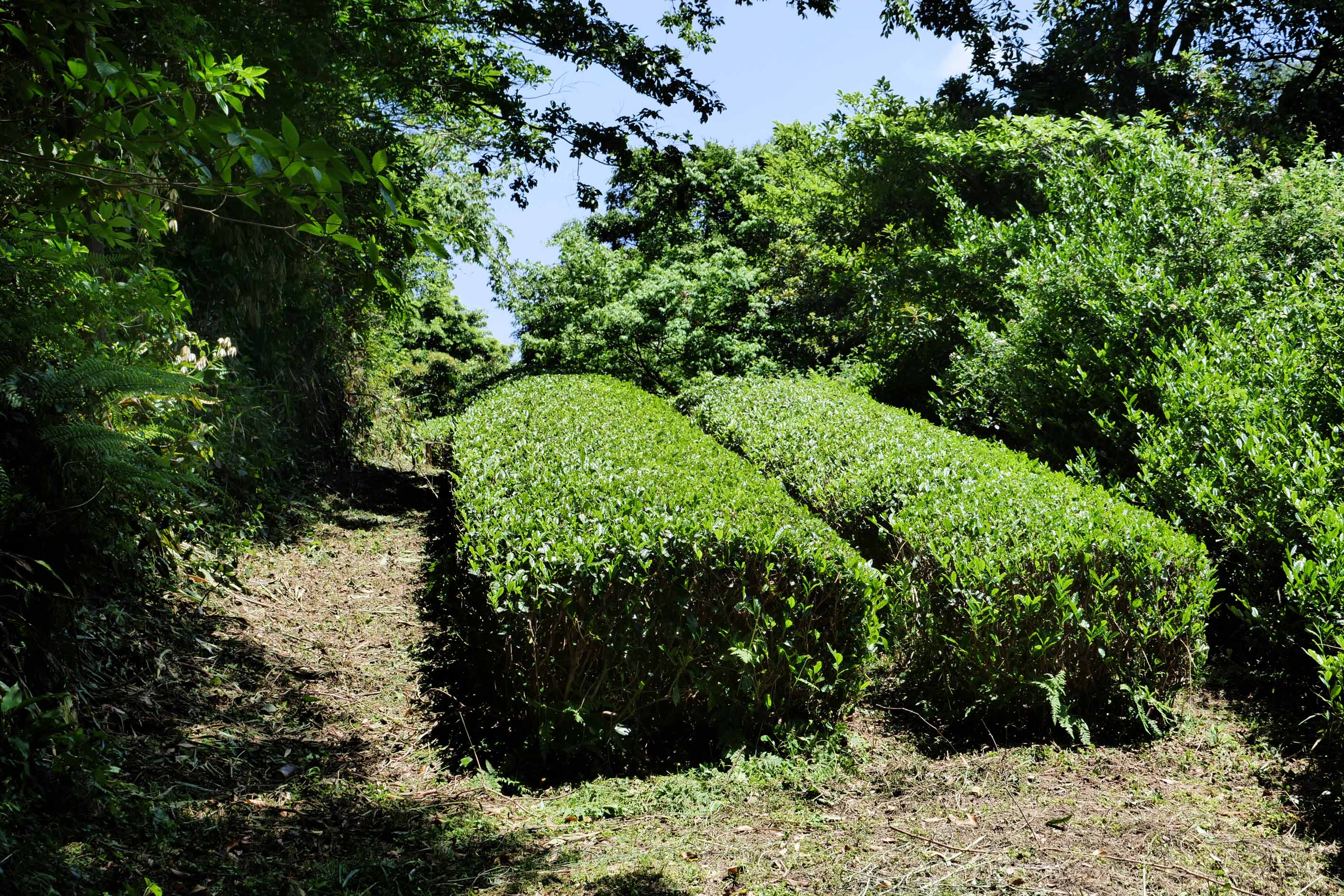
Due to the protected location between the trees and the South-East-direction, it is relatively warm here. The tea garden is directly located on the slope. The lowest row has already grown wild, because it is not possible to harvest here. Yet, the grown tea plants are a very good natural protection against soil erosion. We offer to harvest by hand here, next year. Yusuke smiles and tells us that they have kept the old baskets for harvesting by hand.
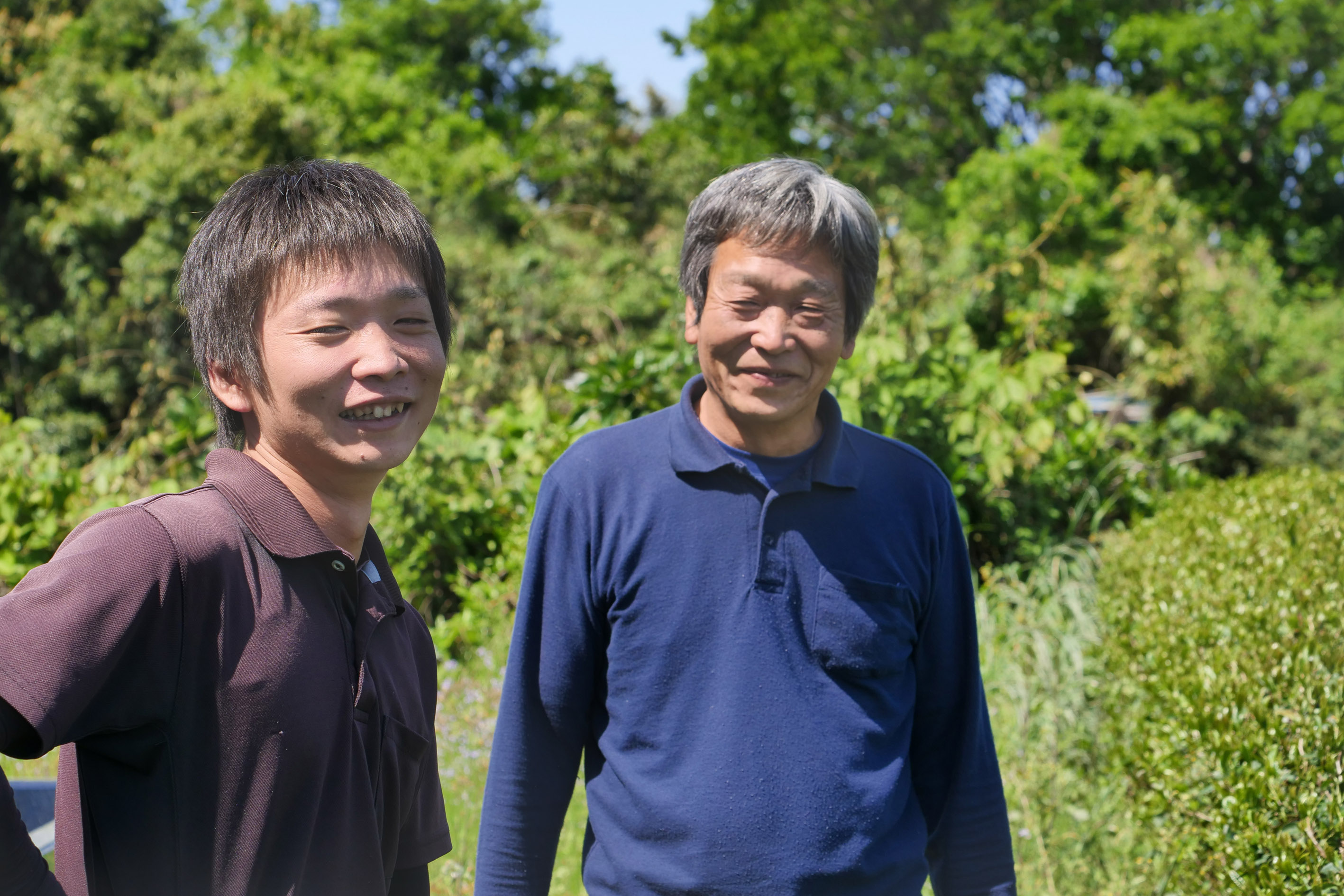
We go further up the mountain to the even higher Arasaki field. There, Yusuke’s father, Yusuke’s sister with her now three children, and a helper are waiting for us. They are just busy removing grasses from the tea garden. As this is done by hand, the family is occupied for several entire days. And in a few days, harvest is about to start here. But now it’s time for lunch break. The family waited with their lunch for our arrival. As we have made a stopover in Japan’s probably most narrow tea garden, all of them are quite hungry already. At the edge of the tea garden, protected by some trees, we sit down, drink the Shincha which was harvested on April 25 as a cold infusion and eat rice and mountain vegetables.
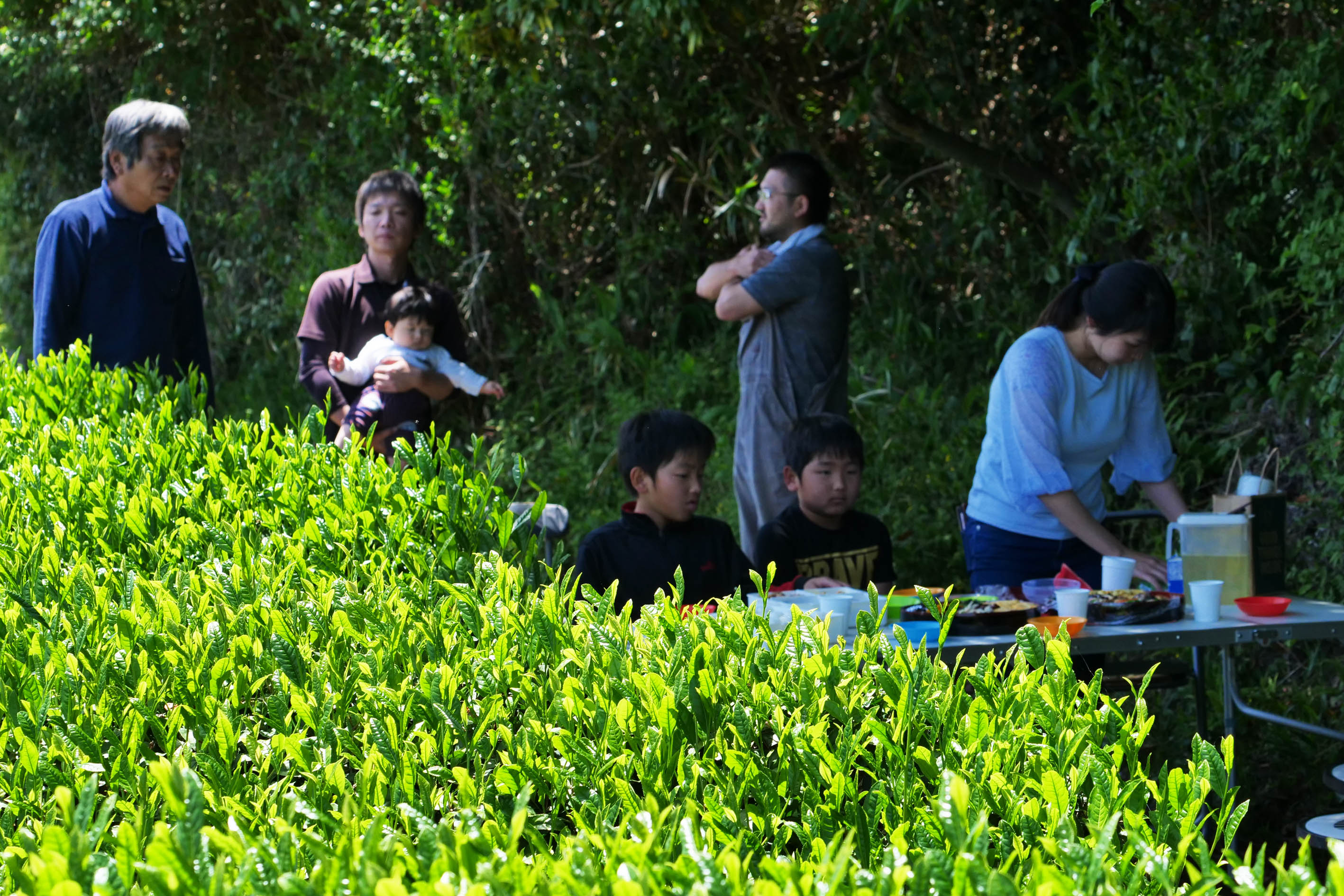
This moment is a perfect dream: In front of us, we see the fresh tea bushes, and far away, we can see the ocean at the horizon, insects are flying around, and again and again we hear various birds singing. The Arasaki tea garden indeed is a little paradise of nature, rare to be found in Japan. Here, for some moments, we can forget all hurry and stress from the journey – it’s like a dream!
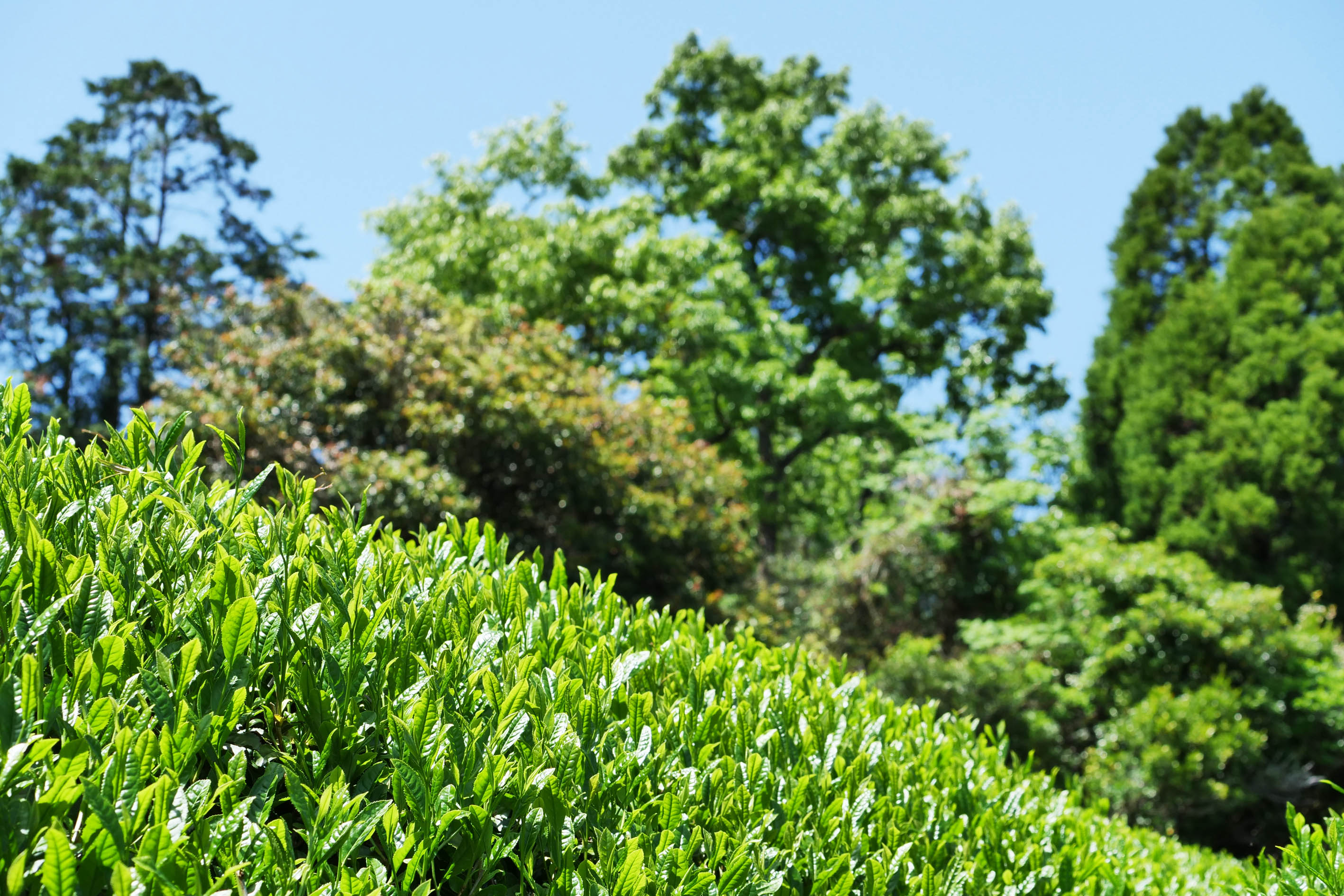
After lunch, we drive down to the Kadota’s house. On the way, Yusuke tells us that early spring was also rather dry here, but a week ago it rained a lot, and since then rainy days and sunny days are taking turns. They are also very satisfied with the test production of the first Kamairi Shincha, which we mentioned above. Moreover, there was no frost problems this year. For Kadotas, very low temperatures below 5°C at night, during the growth period of the new leaves pose a big risk. Last year, nearly the entire first harvest of their tea garden next to the house was destroyed by frost. The fresh sprouts die when temperatures are too low. Then, the tea plants have to start anew growing new leaves. In other tea gardens, there are fans, to blow warm air from upper layers to the tea garden. Kadotas still could not afford installing this kind of fans. For this, the tea garden is just to small with its 2.6 ha. The Kadota family is fortunate that there were not frost problems this year.
In the little manufactory, next to the old cast-iron Kama, we sit down again, and drink Kamairicha Shincha from this year’s test production. We are also delighted by the fine, sweet taste of the tea. Even more, we are not looking forward to this year’s Kadota Aracha Shincha, which is planned to be harvested in the first days of May. We will keep you up to date.
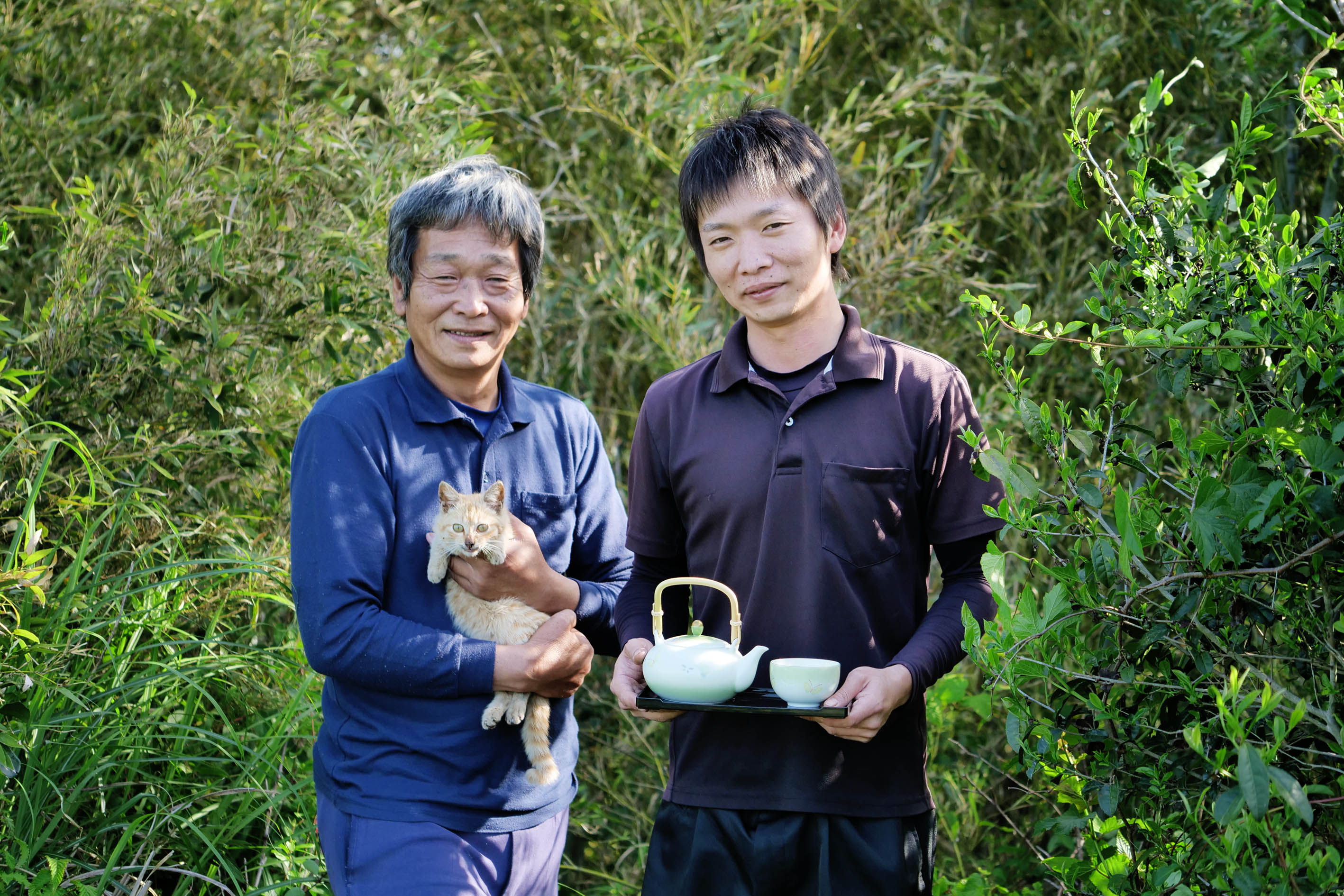
There’s reason to celebrate this year in the Kadota tea garden. Some weeks ago, the tea garden and the small Kamairicha manufactory received their organic processor certificate after a conversion phase of several years. Now they can officially process organic tea. In the tea fields, the conversion phase will be completed in the next weeks, earlier or later, depending on the tea garden parcel – in some cases before the harvest, but in some cases also after the harvest. So, this year they can already harvest and process some teas which will arrive in Europe as organic tea from Kadota.